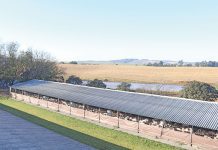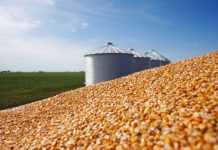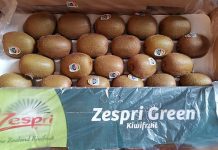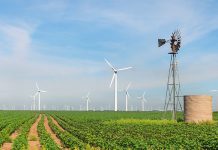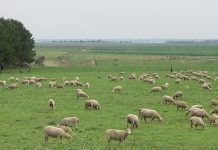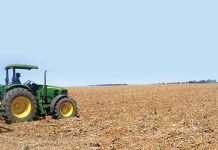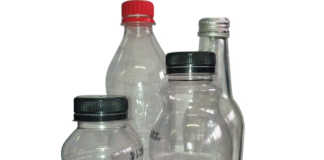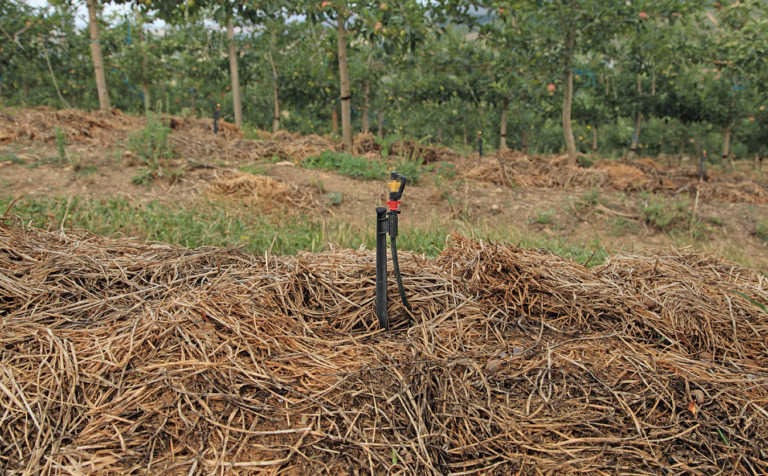
Photo: Glenneis Kriel
Rising electricity prices in South Africa, combined with unreliable supply, has had a negative impact on farm profit margins. Electricity prices have increased by 170% over the past five years.
The country has also been subjected to routine load-shedding, from two to 12 hours at a time.
This not only disrupts farm operations, but damages expensive electrical equipment.
Fortunately, there are several changes that farmers can implement to decrease electricity usage and offset rising costs and unreliable supply, according to Prof Alan Brent of the Centre for Renewable and Sustainable Energy Studies at Stellenbosch University.
The centre has collaborated with Winetech, a network of institutions aimed at improving the competitiveness of the local wine industry to create energy-management guidelines for wine cellars, based on the International Organisation for Standardisation’s ISO 50001 Energy Management System.
The collaboration has concluded that most changes suggested in the guidelines will not be overly expensive as they entail simple behavioural or process changes, and the use of new technology that will pay for itself within a few years through cost savings.
Get staff on board
One of the most critical factors for success is for a farmer to get his staff to buy into the plan. According to Brent, many projects fail because interventions are technologically driven and employees remain unaware of the way in which they influence energy consumption.
In addition, more than one person should be responsible for energy management on the farm.
“Knowledge should not reside with one person alone – it should be accessible to everybody on the farm so that they can understand how their behaviour affects consumption,” Brent explains.
Record usage
Once employees are committed, historical energy usage should be compiled monthly for all energy sources, from electricity to liquid fuels and gas.
This will provide a better understanding of energy requirements and usage during the year, and will allow a farmer to monitor usage, measure the impact of interventions and identify spikes.
For electricity consumption, Brent suggests mapping kilowatt-hour usage according to electricity bills. A simple Excel spreadsheet can be used.
Identify potential changes
Next, a farmer should ascertain whether anything can be changed to optimise the tariff he is on. Switching to a time-of-use tariff system can reduce costs if energy-intensive farming activities, such as irrigation, can be switched to non-peak hours.
In winter, peak time is between six and nine in the morning and from
five to seven in the evening; in summer it is between seven and ten in the morning and six to eight in the evening.
During one of the projects on which Brent worked, a timer was used to switch off an aerator in a wine cellar’s waste treatment plant during peak periods. This resulted in a 50% reduction in the operating costs of the aerator.
“If there’s a choice, don’t use electrical equipment during peak times, especially in winter. Prices are higher in winter than in summer,” he says.
Big consumers
A producer should determine which equipment or processes are his biggest energy consumers. According to Brent, 80% of energy consumption is likely to come from 20% of the operations on a farm.
“It’s better to focus your energy-saving interventions on these operations or equipment first, than to focus on the other 20% that will yield relatively insignificant savings.”
Irrigation
Irrigation is often one of the greatest energy users on a farm. Irrigation should be guided by environmental factors such as precipitation, relative humidity levels, soil moisture content and the requirements of a plant during the different phases of development.
Over-irrigation will not only result in higher energy consumption, but cause stress, which in turn results in plants using more water.
According to Brent, about 80% of vineyards in South Africa require irrigation. Most of these systems are outdated and not as energy-efficient as they should be.
In 2013, the Centre for Renewable and Sustainable Energy Studies conducted a study which calculated that the collective cost of electricity and water for irrigating vineyards was around R72/t of wine produced.
There are many ways in which irrigation costs can be reduced, says Brent. Water-use efficiency should be improved, as this means less water will need to be pumped, and technology should be maintained.
Water-use efficiency can be improved through conservation farming practices that will help to improve the soil’s water-holding capacity and reduce evaporation.
Effective hardware
The efficiency of micro- and drip irrigation, as well as centre-pivot systems, has improved greatly over the past ten years.
The same is true for pumps. Brent identified variable-speed drive pumps as one of the biggest investments an irrigation farmer can make. Before these pumps were available, producers had to settle for a pump that ran according to the speed required to irrigate the ‘most difficult’ parts of the farm.
By contrast, variable-speed pumps allow a producer to control pump speed according to the amount of energy needed for irrigation.
Pumps
Pumping speed could not be adjusted to cater for vineyards or orchards at different slopes or water requirements. Pumps, valves and the physical system must be well-matched and suitable for the unique requirements of an area. Leaks and broken spitters will affect water-use efficiency and energy usage and must be repaired.
In one of the cellars where Brent worked, there was a chilled water plant drawing water from two 35 000ℓ tanks. There were seven circulation pumps in parallel, drawing from these tanks and feeding via a main header to a series of valves, which distributed the water to various areas in the winery.
The large number of pumps and valves in reduced their efficiency.
“There is a point where the addition of pumps in parallel will have no effect, so make sure you don’t overdo it,” says Brent.
The pumps also had different-sized impellers, which, according to Brent, could have resulted in a mismatch of flow, also causing friction.
Small changes, big difference
There are various other ways in which farms can save on energy costs. Refrigeration and cooling costs usually take a big chip out of the electricity bill, and Brent advises farmers to ensure that refrigeration temperatures are set close to what is required.
“If you need to cool a product to 14°C, don’t set the refrigerator to 5°C. Set it to 11°C,” he says.
“On one of the farms where we worked, the refrigerator was set to 9°C, but temperatures in summer never went below 14°C. Hence the refrigerator was not doing its job properly.”
The same is true for compressors. “They need to run at the required pressure, and air leaks should be fixed to save energy.”
Brent also thinks there is considerable scope for farmers to improve energy efficiency by using alternative energy sources.
Phone Prof Alan Brent on 021 808 9530 or email [email protected].

